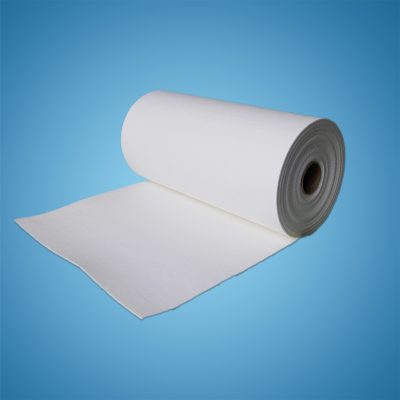What is the classification temperature and maximum service temperature of ceramic fibers?
Table of Contents
What is the classification temperature?
The classification temperature can be understood as the ideal maximum operating temperature for a specific type of ceramic fiber. We know that ceramic fibers shrink at high temperatures, and the higher the temperature, the greater the shrinkage. Moreover, the maximum service temperature of ceramic fibers not only depends on temperature but also on factors such as the gas composition they are in contact with, wind speed, etc. However, we still need to know the approximate operating temperature for various types of ceramic fibers. For example, for zirconium ceramic fibers, we introduced the concept of classification temperature.
When a ceramic fiber is placed in a non-load-bearing high-temperature condition for 24 hours and its linear shrinkage rate is recorded, if the shrinkage rate is less than 4%, the temperature is gradually increased by 100 degrees Fahrenheit until its shrinkage rate reaches 4%. At this point, the temperature is considered the classification temperature for that type of ceramic fiber, for instance, the classification temperature for zirconium ceramic fibers is 2600 degrees Fahrenheit, which is approximately 1430℃.
What is the maximum service temperature?
As mentioned earlier, the classification temperature is measured when the shrinkage rate is less than 4% under non-load-bearing conditions. However, during actual use, ceramic fibers are typically used under load-bearing conditions, and the maximum service temperature for ceramic fiber products of a particular composition will be 100-250°C lower than the classification temperature. Therefore, the determination of the maximum service temperature requires experienced ceramic fiber application engineers to make judgments based on experience rather than laboratory measurements.
Suggestions for determining the maximum service temperature based on the gas composition in contact with the ceramic fiber and the heating method:
– Oxidizing gases: Maximum service temperature is the classification temperature minus 100-150°C.
– Reducing gases: Maximum service temperature is the classification temperature minus 150-200°C.
– Vacuum conditions: Maximum service temperature is the classification temperature minus 200-250°C.
– Fuel oil heating: Maximum service temperature is the classification temperature minus 150-200°C.
– Electric heating: Maximum service temperature is the classification temperature minus 100-150°C.
If you have any questions about the use of ceramic fibers, please contact us via email, and we will provide answers free of charge.





